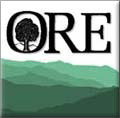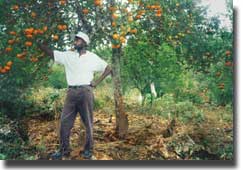Citrus provide of income and nutrition
Since 1985 ORE has worked with all the major commercial varieties of citrus. Several nurseries have been set up in southern Haiti, as well as an important top-grafting program of sour orange trees. The goal is to increase the number of commercial trees by nursery production of seedlings and by top-grafting the sour orange trees which grow in abundance throughout the countryside. ORE has selected the varieties which demonstrated the highest crops revenues: Clementine, Mandarine de Jacmel, Tangelo, and sweet oranges such as Washington Navel and Valencia. Tangelo are very popular because they tend to bear fruit around the year. Mandarins are a gold mine for hillside farmers and we have propagated thousands of Mandarins trees in the Jacmel area. They are one of the highest revenue crops in the country.
A look at citrus in Haiti
Support our efforts to give farmers more high value trees




